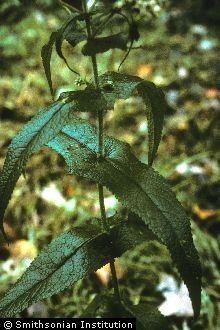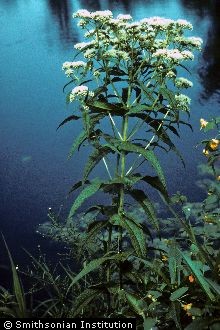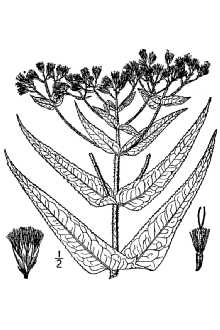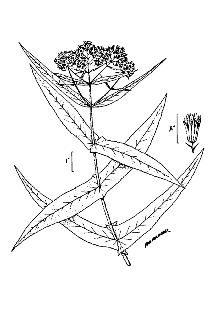Common Boneset
Scientific Name: Eupatorium perfoliatum L.
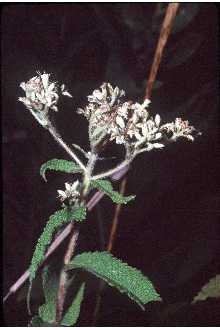
| General Information | |
|---|---|
| Usda Symbol | EUPE3 |
| Group | Dicot |
| Life Cycle | Perennial |
| Growth Habits | Forb/herb |
| Native Locations | EUPE3 |
Plant Guide
Use soil moisture sensors to measure the soil moisture of Common Boneset.
Fact Sheet
Alternate Names
Common boneset, Thoroughwort
Uses
Ethnobotanical: The leaves have been used to treat dengue fever. Modern German research suggests that Common Boneset may act as a general immune system stimulant. It has also been used as a diaphoretic and weak anti-inflammatory. Caution: Common Boneset is emetic and laxative in large doses, and it may contain pyrrolizidine alkaloids that are potentially harmful to the liver. Landscaping and wildlife: The nectar from the flowers of Common Boneset is very attractive to a variety of pollinators, including bees, wasps, and butterflies. The Swamp Sparrow supplements its diet with Common Boneset seeds. Various caterpillars, such as Phragmatobia lineate (Lined Ruby Tiger Moth), Papaipema cataphracta (Burdock Borer Moth), Schinia trifascia (Three-lined Flower Moth), Chlorochlamys chloroleucaria (blackberry looper), Semiothisa continuata (Geometrid Moth sp.) and Haploa clymene (Clymene Moth) eat various portions of the plant.
Status
Description and Adaptation
Adaptation
Adaptation
Common Boneset is a native perennial wildflower that grows from 2 - 4 feet tall. The central stem is covered in long white hairs and is unbranched with the exception of a few flowering side stems near the apex of the plant. The narrow, lanceolate (tapering), opposite leaves grow up to 8 inches long and 2 inches across. The bases of the leaves tend to grow together, making it appear as if the central stem perforates the leaves. Two- to eight-inch clusters of fragrant white flowers (with approximately 15 florets per flower head) appear in late summer or early fall. The florets produce wind-dispersed small dry seed with hair-like bristles. The fibrous root system frequently produces rhizomes (horizontal stem with shoots above and roots below), which create small colonies. Distribution: Common Boneset prefers moist or wet conditions, soil with a significant amount of organic matter, and full to partial sun. It populates a variety of wetland habitats across eastern North America from Quebec south to Florida and west to Texas and Manitoba (USDA cold hardiness zones 2 - 10).
Establishment
Seed Propagation Seeds ripen about a month after flowering and should be collected when the heads dry, split and the fluffy seed begins to float away, If collected earlier, dry the seed heads for 1 - 2 weeks in open paper bags, If seeds are sown directly, sow in the fall and sow thickly as germination rates are typically low, For container production, a cold-moist pretreatment at 40 degrees Fahrenheit for 3 weeks to 3 months will increase germination percentages, After pretreatment, sow seeds in a fine germination mix containing milled sphagnum moss, Transplant to potting mix after seeds have germinated, Seeds germinate at 70 - 85 degrees Fahrenheit and in the
Vegetative Propagation
Common Boneset can be propagated by division or two-node softwood tip cuttings taken in late spring. Divide the plants in the fall as they go dormant or in the spring just as shoots first appear.
Management
Common Boneset prefers moist to wet soil and full or partial sun. Livestock generally find the foliage of Common Boneset too bitter for grazing.
Pests and Potential Problems
The leaves of Common Boneset are favored by grasshoppers, flea beetles and saw flies, which can leave them looking bedraggled by midsummer. It is not drought-tolerant.

